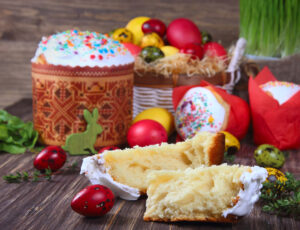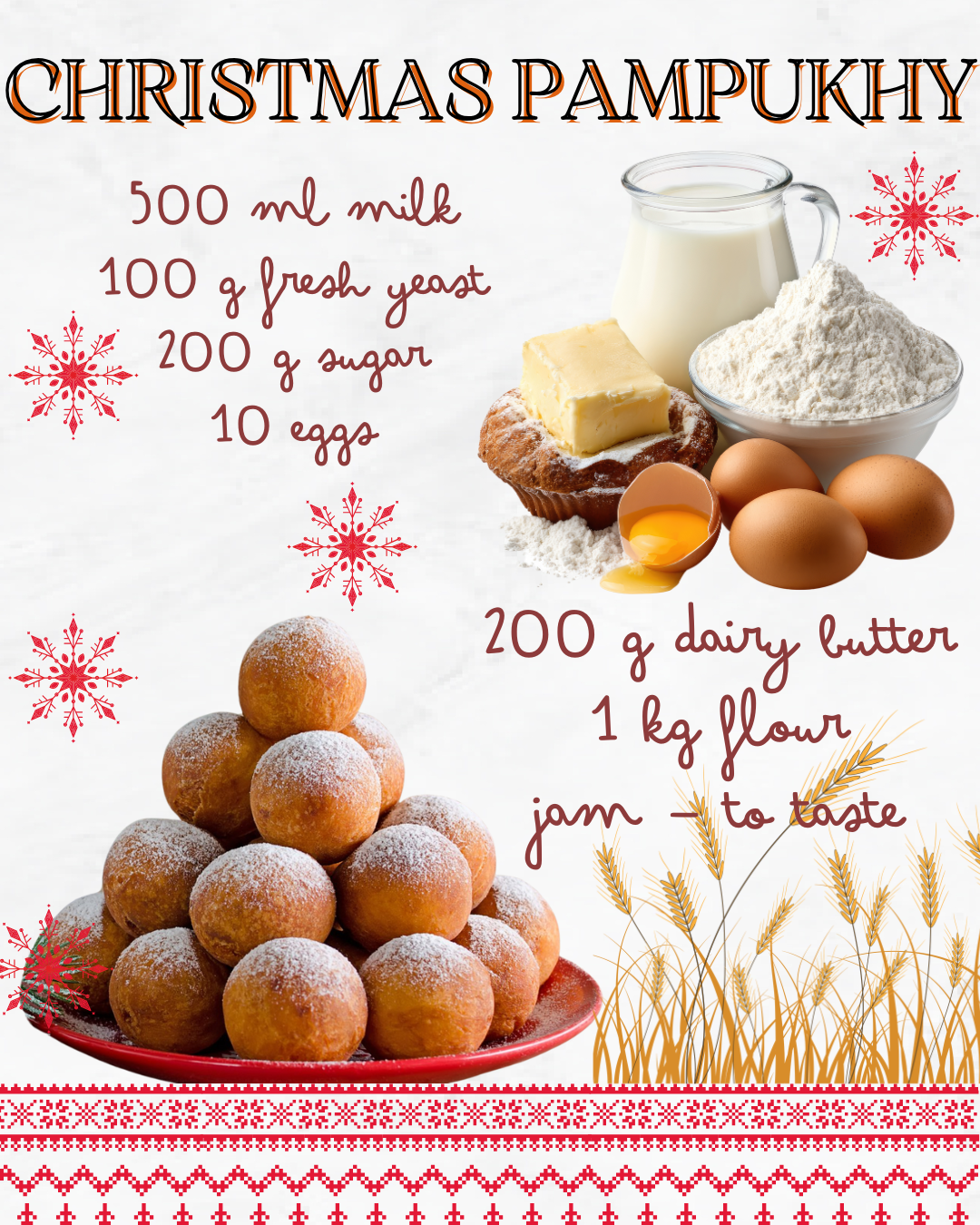Baking Easter bread is an essential part of preparing for the Easter celebration. Every Ukrainian housewife has her recipe, tested by time and tried many times on feasts. Tips and tricks are often shared with family and friends to prepare delicious homemade treats for Easter.
It is believed that it is especially important to start cooking paska (babka) with good intentions and wishes. Ukrainians have always believed that dough absorbs both positive and negative energy. Once you’ve tuned in to positive thinking and prepared all the ingredients on the list, it’s time to start baking!
Classic Easter bread recipe
To prepare paska in the Ukrainian style, you need the following ingredients:
- 750 ml milk
- 300 g sugar
- 1.5 kg flour
- 20 g dry yeast / 60 g fresh yeast
- 2 egg whites
- 7 egg yolks
- 150 g dairy butter
- 100 g raisins
Cooking
- Combine warmed milk with 2 teaspoons of sugar and yeast. Mix everything well and let the pre-dough stand for 20-30 minutes.
- Simultaneously, thoroughly beat the whites with the remaining sugar. Whip the yolks separately.
- Melt dairy butter to a liquid consistency, but make sure it is not too hot.
- Before kneading the dough, combine the pre-dough with the yolks, whites, and sifted flour. Adding flour a little at a time is vital so that the dough is softer than for dumplings.
- Traditionally, the dough for paska is kneaded for 1.5-2 hours, alternating manual kneading and rest for 20-30 minutes. At the end, add melted dairy butter and raisins steamed with boiling water, and knead the dough again. Now cover the dough with a towel and put it in a warm place for 2 hours. During this time, you should knead it 2 times more.
- Next, divide the dough into equal parts and spread it into molds. Important: fill only 2/3 of the mold because the dough will increase in volume (you should leave it for about 1 hour before baking).
- Brush the surface of babka with the egg yolk immediately before baking in the oven. Bake Easter bread until tender at 200ºC / 390ºF (if the oven is gas) or 160ºC / 320ºF (if the oven is electric). The baking time depends on the mold size. So, small babka in a mold up to 2 liters bakes for around 45 minutes, a larger one is baked – 1 hour 10 minutes.
Very important: do not open the oven in the first 40 minutes from the moment you start baking. In this case, the paska may fall off or the bread can crack. And if you see that the dough is already browned, but is still raw, cover the top with parchment paper or foil and bake further.
Easter paska decoration
In Ukraine, Easter bread is decorated with white icing or sugar dissolved in water. To make the classic white icing, you need the following ingredients:
- 1 egg white
- 100 g powdered sugar
- 1 tbsp. lemon juice
Beat egg whites until stiff peaks. Then gradually add powdered sugar, teaspoon by teaspoon, continuing to whip the mixture thoroughly.
At the very end, add lemon juice and beat the mixture for another 5-10 seconds. Finally, grease the tops of the cooled babka with the icing and put them to dry at room temperature overnight or in the oven at a temperature of 100-120ºC / 210 – 250ºF for 3-5 minutes.
If you want to decorate paska more traditionally, then it is better to grease it with sugar water. To do this, 1 tbsp of boiling water above 2 tbsp of sugar and stir until the sugar dissolves completely.
Tips for making the perfect Ukrainian paska
No matter how detailed the recipe for Ukrainian Easter bread is, additional tips and tricks are always helpful. Follow these recommendations to prepare the most delicious, airy, and appetizingly-looking Easter bakery:
– soak dried fruits in alcohol. If you put raisins, dried apricots, prunes, etc. in alcohol before adding them to the dough, you will make their taste and flavor more vivid and rich;
– use premium flour. The high-quality flour contains a sufficient amount of gluten-forming proteins (glutenin and gliadin), which allow the dough to absorb more liquid and form a gluten framework;
– make the dough using hot water, milk, cream, or other liquid. This is done to partially help the flour’s starch to gelatinize even at the dough-kneading stage. As a result, your Easter bread will be more moist, tender, elastic, and most importantly, it will not crumble when cut;
– choose osmotolerant yeast. This type of yeast can process sugar slowly. Thus, in the process of preparing bread for Easter, you can add 20-30% less yeast than usual;
– leave the dough to rest. It is advisable to take 20-30 minute breaks in the possess of kneading. During this time, the flour will absorb water, and the gluten will form properly under the action of enzymes.
Summing up, we can say that you don’t need to have some special skills to bake the traditional Ukrainian paska. You need to follow the instructions clearly. So apply these tips to achieve a perfectly tasty and delicate texture in your Easter baking. You and your loved ones will love the taste of traditional Ukrainian Easter bread!








